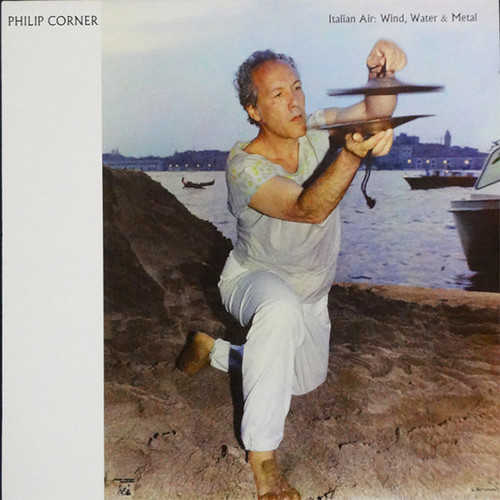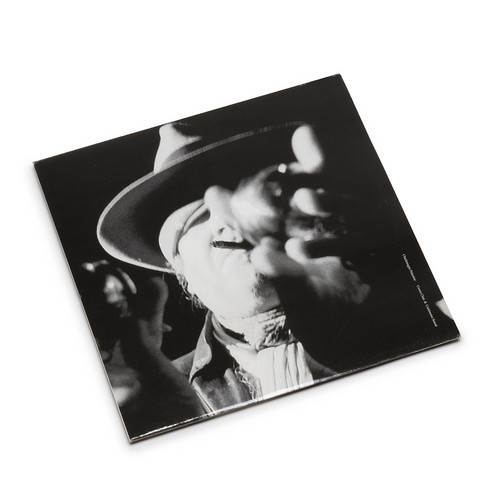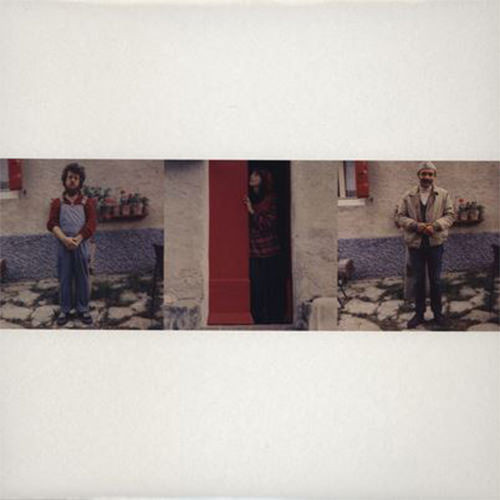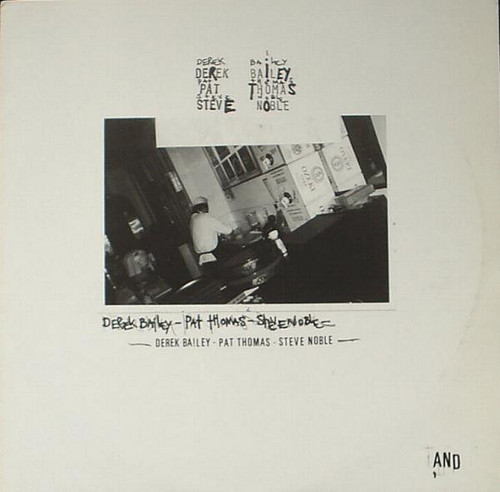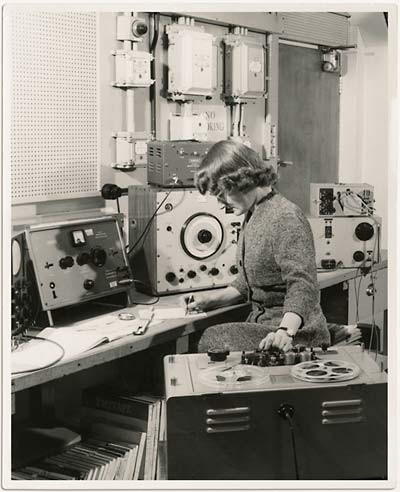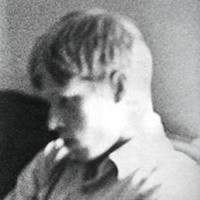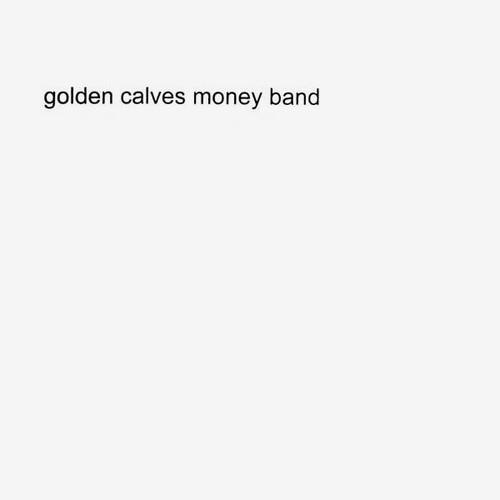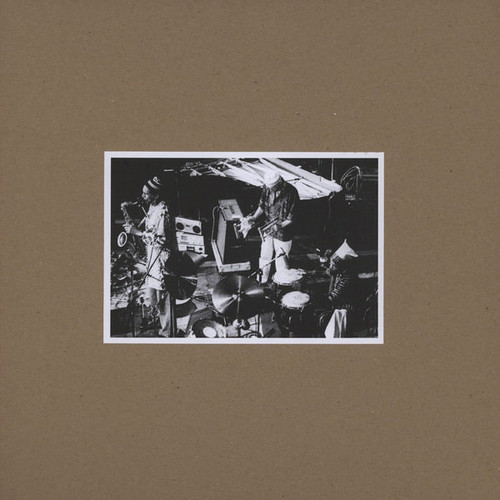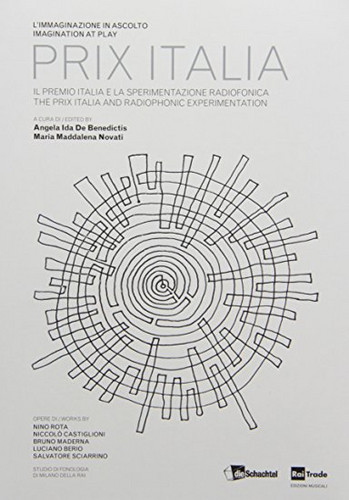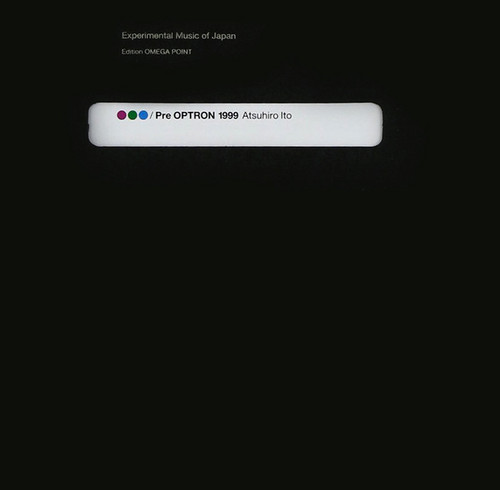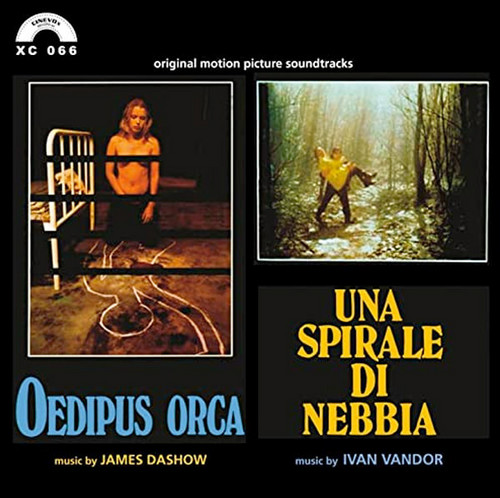Reissues
Italian Air: Wind, Water & Metal
**Limited edition of 300 including two inserts** The first release on Ricerca Sonora is a new album by the important American Avant-Garde figure Philip Corner. A contemporary of John Cage, Corner studied composition with Henry Cowell and Otto Luening and musical analysis with Oliver Messaiaen. He was a founding member of the Fluxus movement, founder (with James Tenney and Malcolm Goldstein) of the Tone Roads Ensemble, the resident musician and composer for the Judson dance theatre, and co-founde…
Two Electronic Sonorities
Two Electronic Sonorities LP includes 2 seminal electronic music radical realizations by Charlemagne Palestine: "Crwon Chan 1&2 + 3&4' subtitled "Gus Salomon Dance Concert '70' a continuous, ever-moving, ever-changing sound-form produced with simple sine tone generators, moog and arps, intended to create a texture for the Gus Solomons (a choreographer at New York University and Merce Cunningham associate) new dance work.
Second side is sublime late 60's electronic work inspired by Michelangelo A…
Archi
Issued for an art event recently presented at the Galleria Milano in the first week of April 2012, the recordings on this LP edition represent a very specific and intimate moment in the creative sound production of Davide Mosconi with NADMA associates Inez Klok and Gustavo Bonora.For Davide Mosconi and for all the artists and musicians involved in the groups he founded (the legendary NADMA, Organic Archestra, Il Quartetto, Alea), improvising sessions were a daily practice that founded their very…
And
Derek Bailey, electric guitar. Pat Thomas, keyboards. Steve Noble, turntables. Recorded at Moat Studios, London, August 1997.
The Oram Tapes: Volume One
2CD version. Daphne Oram, founder of the BBC Radiophonic Workshop, died in 2003 leaving a colossal archive of reel-to-reel tapes and documents behind. This important collection of material eventually made its way to Goldsmiths College, London, who have been administering it on behalf of the Daphne Oram Trust for the last few years. The collection holds over 400 tapes made by Oram during her lifetime, and 211 of those have been archived and catalogued by the college so far. The Daphne Oram …
Chair Beside A Window
The grainy, haunted beauty of Jandek's early work went through many phases, never quite as varied and multi-faceted as the material on his 4th album, Chair Beside A Window released in 1982. The relatively wide range of Chair Beside A Window gives insight into the influences on the seemingly impenetrable Jandek sound. Hearing the blown-out harmonica bluster of 'You Think You Know How To Score' it's hard not to imagine it as the Jandek equivalent of a Dylan phase, however insanely translated.…
Money Band
Collection gathers pre-Wooden Wand and the Vanishing Voice material from James Jackson Toth's Golden Calves project. Originally released in 1996; limited to 1000 copies. "It was really all about The Godz, Jandek, The Shadow Ring, Strapping Fieldhands, Swell Maps and Tower Recordings. Beyond these, I had only heard the 'classic' and most available free jazz, krautrock and noise albums. I was a long way from, say, the second Comus album or Charles Gayle. But this music changed my life. It was a re…
s/t
REISSUE on 180gm vinyl! Originally released in 1969, COSTA's 2nd album is one of the finest releases to come out of Brazil's Tropicalia movement. Feat. songwriting & vocal help from 2 of the original Tropicalismos, CAETANO VELOSO & GILBERTO GIL, she flows effortlessly between shredding psychedelia & smooth bossa nova. An essential record for anyone that appreciates the far reaches of Brazilian popular music. Incl. the classic trks "Baby" * "Não Identificado." Such a pleasant surpise to se…
West Africa Tour (Sierra Leone, Liberia & Guinea), April 1985
special box in 26 copies, made in high quality leather various African objects/artworks from various African tribes, stunning booklet with many rare photos (30) of the Tour (mostly color and b&w) cola nuts (to break the colanut with somebody african saying, which means to make friendship) an extra one-sided LP (I side) on gold and gold/green wax, - ALL recordings available here for the 1st time! "One of music's most amazing powers is its ability to tell a story. In the case of The African Tapes,…
4/23/03 / 4/25/03
Originally released on CD in 2004, this new edition of 4/23/03 is now pressed on two slabs of American vinyl pressed by United Record Pressing and housed within a handsome two color silkscreened gatefold jacket bearing artwork replicating that from the album's CD incarnation. The album, from an edition of approximately 700 copies, presents the entire contents of the original CD version plus a 'new' additional track from the original record¬ing sessions. All copies of the 4/23/03 2xLP are …
Homage To The Pointed Waveforms
Few copies available, sold out at source - Homage To The Pointed Waveforms is the final release in a series dedicated to specific sound waves. Following Square (2008) and Sine (2009), ...Pointed Waveforms explores composition with triangle and sawtooth waves through studies of a dense modular system. Variations were performed live in Barcelona, Brussels and Madrid during spring 2011, but this LP is the next step. Side A contains a version of the piece that was conceived for the shows, whi…
Assemblage
Born in 1929, Boguslaw Schaeffer crossed the Polish Radio Experimental Studio from 1966 to 1976. Many of his electronic music compositions are obtained mixing concrete sounds. For sixty years Schaeffer has shown a pioneering approach to the creative process, exploring untouched, untapped and even unimagined areas of music. His artistry as playwright, composer, musicologist, graphic artist and his extensive interest in other arts disciplines, makes it wholly unsurprising that his visual work mixe…
Secret poems
The KEW stands for a group of three composers: Krzysztof, Elzbieta and Wojciech, founded in 1973 when they were all students at the Fryderyk Chopin Higher State School of Music in Warsaw. They were a group of friends who enjoyed spending time in good (i.e. each other's) company and collectively coming up with new compositions. They weren't average students. Elzbieta Sikora had already been on probation (1968-1970) in Groupe de Recherches Musicales in Paris under the guidance of Pierre Sch…
Live '72
There are not too many names that get us more excited here at AZ HQ than Conrad Schnitzler's. Since the mid-1960s, Schnitzler has been one of the undisputed masters of electronic experimentation, and his name is synonymous with Krautrock's innovation and defiant musical vision. A prolific solo artist, he also founded Kluster (later Cluster) with Dieter Moebius and Hans-Joachim Roedelius, was an early collaborator with seminal Kosmische acts Tangerine Dream and Klaus Schulze, and, in 1967, founde…
Imagination at play. Prix Italia and Radiophonic Experimentation
Finally restocked! After five years of intense, passionate and sometimes painful work Die Schachtel (in collaboration with RAI) is proud to announce the release of the long-awaited massive Book (Edited by Angela Ida de Benedictis and Maddalena Novati) with 6CDs boxed edition dedicated to some of the most compelling Italian radio works which took part in the prestigious Prix Italia, a world-famous contest established by the RAI (the National Italian broadcasting company) in the early Sixties and …
Krewton the Knewtron
'Previously unreleased material by the legendary Rick Potts of the Los Angeles Free Music Society (LAFMS), to commemorate his solo tour of Japan. Raw, lo-fi avant-garde experiments with field recording, improvisation and tape music, recorded in the late seventies when Rick was in his early twenties. Featuring contributions by Le Forte Four and Doodooettes on one track, and two recently recorded unreleased tracks. " In 1977 I wanted to make an animated film filled with the strange creatures…
R.G.B. / Pre Optron 1999
This CD is a remastered reissue of a very limited CD-R released by Omega Point in 1999. This is the sixth volume in Edition Omega Point's Experimental Music Of Japan series. Atsuhiro Ito was born in 1965. He launched his career as a visual artist in the late '80s, and in '98 began presenting sound performances at art exhibitions. Ito made use of fluorescent lighting (which is also an element of his art installations) in the creation of an original musical device called the Optron. In addition, I…
And It Could Have Been Dead...
Achim Mohné experiments with the space and time intervals of media, photography, video, digital image production, as well as with sound. His experiments bring to light the surprising uses that lie dormant in today's technology. For The Tapeworm, Achim focused on audiotape itself: as material, as body, as signifier and as sculpture. Some notes on the sources and methods used to create And It Could Have Been Dead... follow: A1., "How To Use This Cassette" is mixed from a 1982 Blaupunkt instruction…
Oedipus Orca / La Orca / Una Spirale Di Nebbia
A double set of soundtrack material for the 70s films of Eriprando Visconti (1908 -1980), the nephew of the great Luchino Visconti, with the CD release of the scores from his most famous movies: "La orca" and its sequel "Oedipus orca", and "Una spirale di nebbia". "The first CD is by the computer-music pioneer and wizard James Dashow: Besides the selected tracks for the original LP album (Cinevox MDF 33/107 - 33:15), about 21 minutes of extra music have now been included. This OST keeps a consta…
Piano work'd
Philip Corner (b. 1933) is an American composer, musician and visual artist. His teachers include Henry Cowell and Olivier Messiaen. While on military duty in Korea in 1960-1961, he studied calligraphy with Ki-sung Kim and many of his works have calligraphic scores. A founding member of Fluxus, Corner has performed with George Maciunas, Dick Higgins, Yoko Ono and Nam June Paik. From 1967 to 1970 he taught the course in Experimental Composition at the New School for Social Research, which John Ca…
